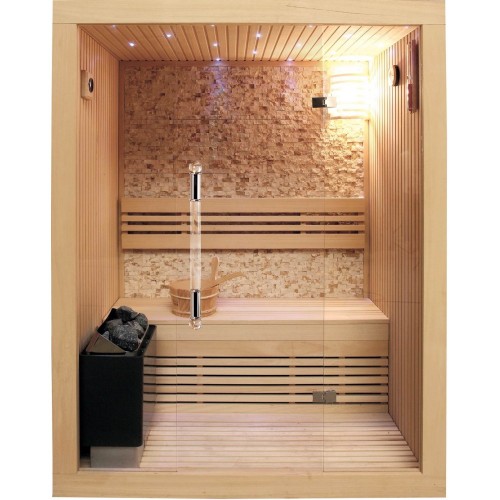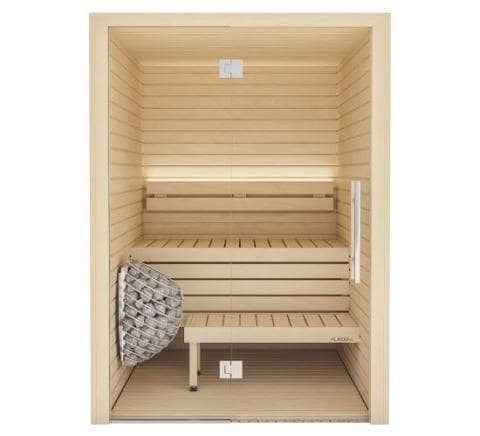The Ultimate Guide To Traditional Sauna
The Ultimate Guide To Traditional Sauna
Blog Article
Traditional Sauna for Beginners
Table of ContentsThe Definitive Guide to Traditional SaunaA Biased View of Traditional SaunaNot known Factual Statements About Traditional Sauna Traditional Sauna Fundamentals Explained
A lot of the weight lost in a sauna is water loss and is re-gained upon rehydrating. However, without a doubt sauna can be an essential component of a healthy weight management program. To consider the differences in between typical and IR saunas, I will certainly separate these right into verifiable, theoretical, and made distinctions.Therefore, the most popular point in the saunawhich goes to the ceiling straight above the sauna heateris typically in between 185 and 190 F. Traditional Sauna. Claims that a standard sauna surpasses 200 F is merely not true and not appropriate for electric saunas marketed in the US. The temperature for a far-infrared sauna is usually established between 120 and 140 F; nevertheless, unlike the conventional sauna, the goal in and IR area is not to accomplish a high temperature level
Due to the fact that of this, the temperature level difference is nearly pointless, considering that profuse sweating causes both sauna types, yet the method of heating the body is various. In an IR sauna the bather will really feel warm and will certainly sweat a lot, however at much reduced temperatures. Therefore, if the objective is to spend longer time periods in the sauna, the IR sauna is an excellent option.

Not known Incorrect Statements About Traditional Sauna
When the heat is attained, the elements cycle on and off to maintain the high temperature. Many conventional sauna customers enjoy pouring water over the rocks to create vapor to elevate sauna moisture degrees. The advantages of putting water over the rocks consist of: making the area a lot more comfy, dampening the nasal flows, and enabling the usage of aromatherapy by mixing important oils with the water.
In a far-infrared sauna, the warmth waves pass through the body to properly heat up the body and increase the body core temperature. To accomplish this raised temperature, Far-infrared emitters create infrared energy which is close to the same wavelength as that which the body normally emitsoften referred to as the "Essential Range" of 7 to 14 microns), so the power is well obtained by the body.
When the power gets in the body, it causes the body temperature level to raise and inevitably causes sweat. In an infrared sauna it is very important for the emitters/heaters to remain on almost regularly. Because there is no mass of rocks to retain heat, the sauna will certainly cool if the emitters shut off.
As mentioned over, the sauna bather in an infrared space wishes to place himself in front of operating emitters to obtain optimal take advantage of the heat. The heating time for the 2 spaces can be extremely various, depending upon how the spaces are utilized. For a conventional sauna, a bather should permit 30-40 minutes for the room to accomplish a wanted temperature level and to effectively pre-heat the rocks.
Rumored Buzz on Traditional Sauna
A well constructed sauna will normally achieve a temperature of 150-160 F in regarding 30-40 minutes. For hotter temperatures, the room might need to heat for a longer period.
To some, 15 minutes was "squandered" while the infrared power heated hop over to these guys up the timber panels instead of heating up a body, while others locate a pre-heated room to be much more comfy and think a raised beginning temperature level is required to begin sweating. The length of suggested use for each room is about the very same (10-15 mins per session); nonetheless, because of the reduced air temperature levels and the ability to really feel the effects of infrared warmth faster than a conventional sauna, it is not unusual for an individual to spend a total of 20-30 minutes in an infrared sauna.
Standard saunas have a tendency to be bigger (therefore make use of even more power) than infrared saunas, although standard saunas are absolutely offered in one and 2 person sizes also. For a two-person standard sauna, 5x6 or 5x7 size is most prominent. The top bench can conveniently seat 2 or three individuals and is likewise enough time to rest throughout the sauna session.


The typical expense per kWH of electricity in the U.S. is approximately $0.11, so a 4.5 kW heater will certainly set you back approximately $.50 to compete one hour, if the heating system runs continually for one hour. Normally a sauna heater will run for 75% of the very first hour and 50% of succeeding hours on since the aspects cycle once the established temperature level is achieved.
The Facts About Traditional Sauna Revealed
A two individual far-infrared area is generally physically smaller sized than a traditional sauna, commonly concerning 4' x 4' or smaller sized. The IR heating system is generally 1.5-1.7 kW using a 120 volt 15 amp plug-in service. Because the space can be utilized faster than a sauna area, we will certainly think the area is utilized for company website to of an hour consisting of warm up time.
There is a seldom talked about difference in the social experience in between the 2 rooms. While our culture has shed some of the social advantage of the traditional sauna experience, it can be very socially gratifying. From family members time in the sauna, to heart-felt over here conversations with loved ones, to sauna partiesthe conventional sauna experience can result in intimate socializing.
A lot of higher end infrared areas include colored light treatment, audio systems and full-glass fronts.
Report this page